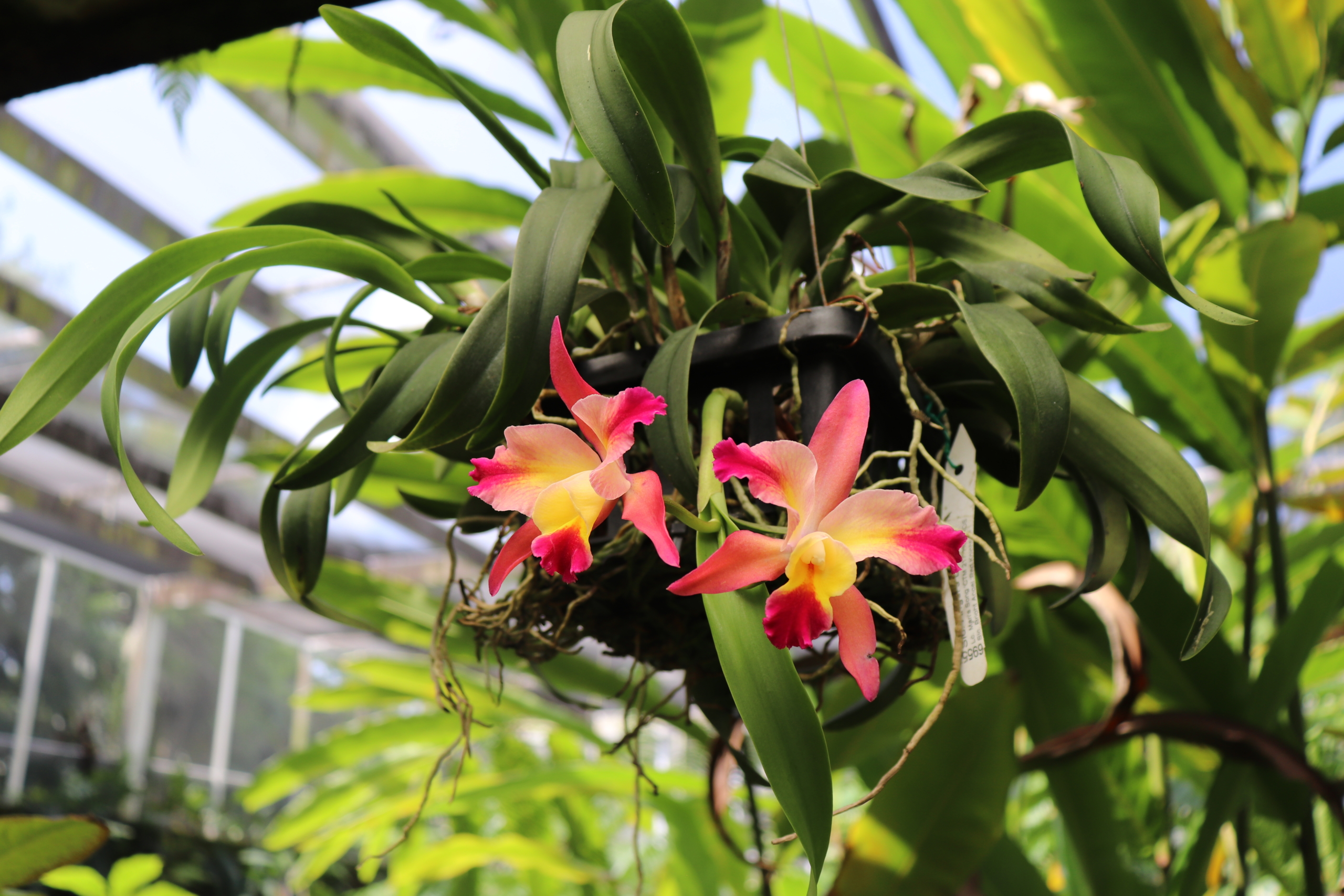Caring for Orchids 101: Basic Orchid Culture

Balancing Air, Light, Fertilizer, and Water
Knowing which orchid you are trying to grow is your key to meeting its cultural requirements. Orchids, like all plants, need a balance of light, air, water and food to grow and flower well. Let’s examine each of these elements.
Orchid Roots Need Air
Orchid roots, and eventually the entire plant, will die if they do not get air. This is why, with the exception of a few terrestrial orchid varieties, they do not grow in soil. Orchid potting media should be open, with exceptionally good drainage, yet capable of holding sufficient moisture to support the plant’s needs. Orchid plants are also intolerant of a stale, stagnant environment. You should strive for a buoyant atmosphere and must provide gentle air movement at all times.
For orchids grown in the home, an overhead paddle fan set on its lowest setting or a portable oscillating fan directed away from the plants can provide the needed air movement.
Orchid Light Requirements
Without enough light, orchids may produce lush-looking growth but no flowers. Not giving orchids enough light is the most common reason for failure to bloom. The old notion of orchids growing in dark jungles still persists, and it couldn’t be further from the truth. In reality, many have evolved as epiphytes (plants growing on another plant or tree) to take advantage of brighter light available in the upper forest canopy.
Fertilizing Orchids
Orchids will grow and flower, if their other requirements are met, for fairly long periods without fertilizer. However, you’ll get better results with some level of feeding.
Typically, plants are fertilized once a week during the summer and every two weeks during the Fall and winter. Regardless of the fertilizer that you choose, most experienced growers use no more than 1⁄2 the label- recommended strength. And by the way, it’s best to water first to wet the potting medium before you fertilize.
Fertilizers used on orchids should contain little or no urea. This is because soil organisms must first convert the nitrogen in urea to a form useable by plants, and since orchids do not grow in soil, this conversion does not occur efficiently. The old conventional wisdom used to be that orchids grown in bark mixes needed to be fertilized with formulations high in nitrogen (i.e. 30-10-10). We now understand that these high-nitrogen fertilizers aren’t necessary.
Watering Orchids
Without question, more orchids are killed by incorrect watering than by any other mistake. Proper watering consists of two separate components: quantity and frequency. Orchids should be watered just as they dry out. There’s unfortunately no magic formula, because your growing area is different from anyone else’s. Humidity, air movement, potting medium (type and age) and light levels all play a role. There are several ways to determine when a potted orchid is almost dry: the surface of the potting mix will appear dry; dry pots will feel lighter; clay pots will feel dry; a wooden stake or skewer inserted into the potting mix will come out almost dry. If in doubt, a finger inserted into the potting mix is perhaps the best way to determine the moisture content of the mix. It will cause no harm to the plant.
When orchids are watered, they should be watered copiously. Keep providing water until it runs freely from the drainage holes. Not only does this soak the potting medium, but it also flushes out salts that naturally accumulate. At a minimum, try to thoroughly water your plants at least once a month.
Watering frequency can be controlled by the choice of pot. For those who really like to water their plants or who live in humid, rainy areas, clay pots—especially slotted pots—are a good choice. Growers in drier climates or those who tend not to water often enough might want to use plastic pots to hold moisture longer.
Observation
Finally, most experienced growers will agree that observation is the most important key to growing orchids well. Examining your plants on a regular basis will allow you to adjust and correct any problems before they become severe. In subsequent articles we will examine these four elements of culture in more detail, and will look at the orchid genera more commonly found in the marketplace. For more detailed information about growing orchids, visit the American Orchid Society’s website at www.aos.org.
This article was written by Ron McHatton, Ph.D., and originally published in the Fall 2014 issue of the Tropical Garden. Minor changes from the print version of this article were introduced to improve readability in a digital format.
